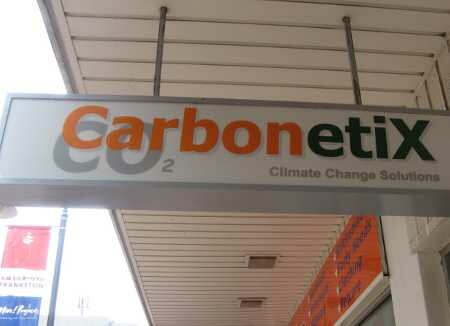In the Hans Christian Anderson fairytale an emperor is proudly dressed in clothes that supposedly only the wise can see until a boy shouts out “the emperor has no clothes”.
When it comes to the climate change response the seemingly obvious first step, to a large extent, is being obscured. The first step being simply using less energy. The emperor isn’t totally naked – he might have underwear on – but to a large extent energy conservation – or using less energy - isn’t being pursued with the vigour it should be. And in a world in economic crisis – where saving energy saves money - its crazy to be focussing the climate change debate on how much we need to spend rather than how much we can save.
There is common consensus that to slow climate change, to avoid run-away global warming, to provide a stable climate for future generations that we need to urgently reduce carbon emissions now. Some very experienced, respected and prominent climate change scientists, such as James Hansen, are saying that we actually need to go beyond reducing carbon emissions, we need to actually remove carbon from the air, as atmospheric greenhouse gas concentrations are already far too high.
The obvious starting point to solving the climate change challenge is using less energy, and thus producing less carbon.
- Obvious because using less energy results in money being saved, not spent.
- Obvious because the money saved can then be invested in cleaner power sources.
- Obvious because in the current economic climate we all want to cut expenses.
Using less energy is clearly a win – win. It reduces carbon emissions. It saves money. To put it bluntly it’s a no-brainer.
Substituting fossil fuel power sources with clean energy sources comes next on the list. But this doesn’t give the financial return of energy conservation, as renewable power is still more expensive than black power.
Along with the switch from fossil fuel to renewable energy sources comes sequestration – removing carbon out of the atmosphere. This however costs money too.
So in order to minimise the cost of response to climate change the obvious strategy, to me anyway, is to reduce energy consumption, thus saving some money, then use the savings to purchase green power and fund carbon offsets. And becoming carbon positive, so that the net impact is extraction of carbon from the atmosphere. And to do this as fast as possible. Wouldn’t you agree?
Now the exciting thing is that if pursued vigorously, with focus, the savings from energy conservation – or energy efficiency, will more than cover the cost of green-power and the carbon offsets needed. So even becoming carbon positive can be a win-win.
An example is our office. We have a strong culture of energy conservation. Our energy consumption is around 1/3rd of the consumption of other offices the same size. This saving pays for 100% green power, carbon offsets, and some additional carbon sequestration over and beyond offsetting our organisation’s travel related emissions. We are saving money, and are climate positive. How good is that?!
Unfortunately however the climate change debate is largely centred around costs. The very real threat of dangerous climate change is compared with the cost of responding to it. A lose-lose scenario comes through strongly. Do nothing and planetary climate stability is at risk. Do something to avoid dangerous climate change and the economic system as we know it is at risk.
But this attitude is very dangerous because it causes paralysis. Why do anything if you will only lose no matter what you do?
However for many organisations, the savings from an aggressive carbon conservation approach will pay for the cost of becoming carbon neutral or even carbon positive. I am not saying that in all cases that carbon neutrality can be achieved at no cost, but based on my experience with thousands of buildings, if a choice is made to aggressively conserve carbon in many cases climate neutrality can be achieved and money left on the table.
In fact the carbon inefficiencies in most organisations are so gross – wasteful buildings, fat car fleets, very poor use of carbon saving communication technologies – that I believe the developed world could become carbon neutral at no net cost – if carbon conservation is passionately pursued. (And we build renewable generation fast enough and have the capacity to sequester any remaining emissions).
Finally, even if becoming carbon neutral or climate positive does come at a cost, is this cost going to destroy your organisation? For the vast majority of businesses the cost of energy is around 1 % of total operating revenue. Even if energy costs doubled in order to achieve carbon neutrality would that force the company into bankruptcy? I doubt it.
Significant carbon conservation requires cultural changes in attitudes to energy, no doubt about it. But with a positive approach to the challenge of climate change, and passionate carbon conservation, we might just create a world with a stable climate that is cleaner, greener and wealthier.














